In the Beginning?
Is Our Universe Alone?
Horizon – Before the Big Bang
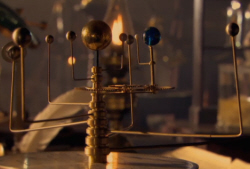
Planetary Model
For thousands of years, science has tried to understand the mysteries of the night sky. It is an awe-inspiring achievement that a certain kind of ape has
discovered that it is living on a planet, that the planet is flying around a star in the galaxy. And that that galaxy that is just one of a vast sea
of galaxies in the near-infinite universe.
But now it seems, science is about to go one step further with an idea that will make previous breakthroughs in cosmology pale into insignificance. It
is the grandest concept imaginable, yet it has its roots in a notion that we are all familiar with.
Cause. And effect.
It’s a simple, yet powerful idea. Because one thing follows another, we can stray from the present. We can boldly stride into the future, and confidently
travel back in time.
It’s this idea that allowed American astronomer Edwin Hubble to draw a far-reaching conclusion to what he saw in the movement of galaxies.

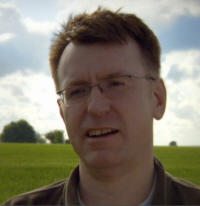
Professor Bob Nichol
Professor Bob Nichol, University of Portsmouth “The discovery of the century had to be Edwin Hubble making his Hubble diagram. And what he did
is he just plotted distance versus velocity, or speed, of the galaxy. And can you imagine one day making that plot and you discovered things further
away moving faster away from you? And this is the famous Hubble diagram which told us that the universe is expanding. This revolutionised our review
of the universe. Not only was there a universe out there but now there was a universe that was expanding and it was getting bigger and bigger with
time. And it didn’t take long for someone to figure out, that if it’s getting bigger with time, surely it started from somewhere. And this really
brought out the first idea that there was a moment of creation i.e. the big bang.”
Professor Neil Turok, The Perimeter Institute “I think the discovery that the universe was expanding was one of the most significant in science.
It’s only similar level to Darwin’s discovery of evolution. It tells us the universe wasn’t always the way it is today, it tells us we came from
something, something violent, something extraordinary.”
The big bang is an elegant answer to the biggest question that science can ever ask. It’s a startling idea. It gives us a sense of origin. And how
ever odd the notion sounds, it’s a comfort to know exactly where we came from.
Science assures us that our universe exploded into existence 13.7 billion years ago. And thanks to cause and effect, science knows what happened
right from the very beginning of the bang itself. Well, almost.
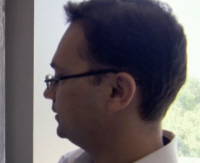
Dr Param Singh
Dr Param Singh, the Perimeter Institute “So, in the standard picture, if this is the history of our universe, then this is where the big bang
is. At t = 0. This is when the baby was born. And when the universe is somewhere here. Where this is 10 to the power of -34th of this one second.”
Class “So we know about the universe up until 0.0000341 seconds before it started. That’s a pretty small number, isn’t it?”
Param Singh “At this point, the classical theory would fail.”
The thing is, big Bang doesn’t quite work. So much so, that people are now starting to think the unthinkable – that big bang wasn’t the
beginning at all.
Lecturer “How many people think that there was something before the big bang?” Many of the students raise their hand.
10 years ago, this would never have happened. Then, there was no doubt that “before the big bang” made no sense. But today, the certainty has gone.
There is no escaping the inconvenient truth that Hubble’s graph, work of genius though it is, contains a huge problem. It tells us that everything
we see in the universe today – us, trees, galaxies, zebras, emerged in an instant from nothing.
And that’s a problem. It’s all effect, and no cause. The idea of “Everything from nothing” is something that has occupied physicist Michio Kaku
for much of his professional life.
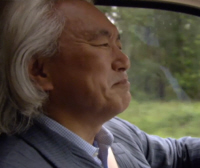
Professor Michio Kaku
Michio Kaku “You know, the idea sounds impossible. Preposterous. I mean, think about it – everything from nothing! The galaxy, the stars in the
heavens coming from a pinpoint. I mean how can it be? How can it be that everything comes from nothing? But you know, if you think about it up
while, you begin to realise it all depends on how you define ‘nothing’.”
In a sandy dusty, Ohio, is Plum Brook Station. It is here that NASA recreates the conditions of space on Earth, and part of that means generating
nothing… in vast quantities.
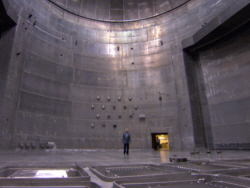
Biggest Vacuum Chamber
This is the biggest vacuum chamber in the world.
It’s eight-feet-thick walls are made from 2,000 tons of solid aluminium. It takes two days of pumping out the air, and another week of
freezing out the remaining molecules to create a near-perfect vacuum. A cathedral-sized volume of nothing.
Michio Kaku “When they switch this place on, this is as close as we can get to a state of nothingness. Everywhere we look we see something. We
see atoms, we see trees, we see forests, we see water. But hey, right here, you can pump all the atoms out, and this is probably the arena out of
which genesis took place. So if you really understand the state of nothing, you understand everything about the origin of the universe.”
Except, of course, it isn’t quite that straightforward. For a start, the “nothing” created by NASA still has dimensions – this is nothing
in 3-D. The tests carried out within the chamber can, of course, be viewed. This is nothing through which light can travel.
NASA’s “nothing” has properties. This “nothing” is, in fact, something.
Michio Kaku “I think there are two kinds of nothing. First there is what I call absolute ‘nothing’, no equations, no space, no time, absence of
anything that the human mind can conceive of, just nothing, but then I think, there is the vacuum, which is nothing but the absence of matter.”





